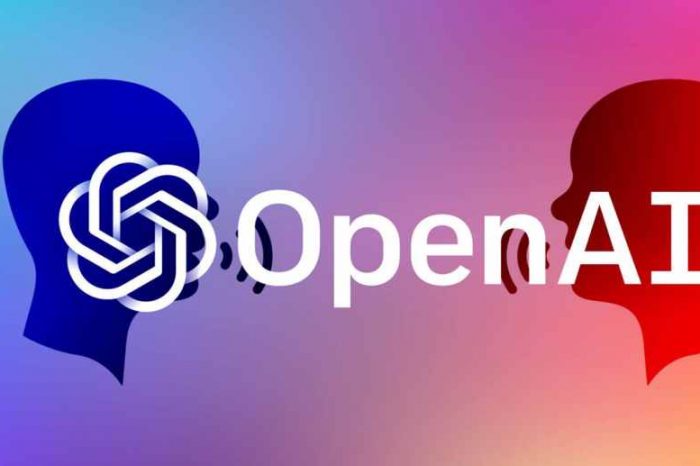How artificial intelligence is empowering the media industry

More industries and businesses are exploring the possibilities of Artificial Intelligence (AI). Companies are eager to invest in and develop AI solutions to enhance work processes and improve customer experience. Media hasn’t become an exception from such trends. In fact, AI has revolutionized the world of media and entertainment as we know it. The innovations brought by this technology advance media platforms as much as their clients. Viewers and readers receive personalized services based on their interests and user history.
Overall, AI in media has vast potential that most players have only started to explore. Thus, the media AI market reached $10.87 billion in 2021 and $14.81 billion in 2022, predicting 26.9% growth by the end of the decade. Here is how media and entertainment AI transforms the industry.
AI is already gaining traction
Many media giants are already experimenting with AI’s newest solutions. These companies seek workflow improvements, higher customer traction, and enhance user experience. Let’s see the main examples of AI-fueled changes that are being adopted by major media giants.
Netflix
When it comes to tech innovations, Netflix leads the way. The company has been the pioneer of AI solutions long before others dared to introduce such changes to their structure. The two main areas Netflix applied AI solutions were viewer data analytics and cast compilation. In addition, the technology is deeply integrated with their recommendation algorithms as it learns the common patterns and provides the analysis and predictions of the viewers’ data.
On top of that, Netflix uses AI for video compression. Such innovation is able to analyze a video shot by shot and eliminate spatial redundancies, thus, reducing the data without damaging the overall quality. As a result, it allows for faster downloading time and a better user experience.
20th Century Fox
This film production company has found a way to create the most appealing, effective trailers using AI technology. Thus, 20th Century Fox analyzes films’ most thrilling, emotional, and exciting moments using AI solutions to ensure they make it to a trailer. The filmmakers are only left to arrange the chosen pieces together in a video.
In addition, the film company relies on AI analysis to predict audiences for each of its premiers. Hence, AI can draw accurate portraits of audience types to attend the movies. Such information helps build marketing and promotional campaigns.
Comcast
The major media conglomerate, Comcast, relies on AI technology to foresee customers’ technical needs before they take place in real-time. Their goal is to ensure 100% service efficiency, providing comfortable watching sessions with zero connectivity issues. AI’s learning and cognitive abilities allow it to predict and prevent issues before they occur, sending respective notifications.
Disney
Sure enough, Disney could not stay away from such a revolutionary tool as AI. Currently, Disney experiments with AI’s ability to reduce image noise, resulting in higher-quality pictures. Of course, the company also explores additional AI benefits and the newest technological approaches in media, including augmented reality (AR), computer vision, and other technologies that can give them an edge in their market.
Yet, AI seems to be at the center of Disney’s attention, especially with their latest project, StoryPrint. This is a tool for breaking down key scenes and character development moments, providing a visual comparative analysis.
AI Applications in the Media & Entertainment Sector
AI in entertainment and media can take various shapes and uses. However, the final goal of this technology development is always similar. Media companies strive for higher engagement and interactive levels, enriched content, greater entertainment, and higher personalization. Such goals allow media and entertainment companies to compete with each other, earn bigger audiences, and grant higher user satisfaction.
Currently, many areas of the entertainment sector rely on AI for achieving those goals. Here are some examples of AI in the media and entertainment industry.
Digital Storytelling
AI can help bring stories to life. The modern solutions include comparative analysis of archives to choose appropriate content, enhanced immersive experience due to sensor technology, and transmedia storytelling. In addition, AI helps create improved virtual experiences in media production.
Music
Music is one of the main areas for AI innovations. The industry’s prior focus lies between the personalization of users’ recommendations and customized content and enhancing music production by applying style transfer and similar technologies.
Book Publishing
The publication business also benefits from AI solutions. The technology helps personalized book suggestions, automate publishing processes, enhance copyright management, and more.
News
AI in news media is responsible for fact-checking and content verification. This technology can examine various sources of information, detect fake news, analyze clients’ news preferences based on social media analyses and prepare personalized feeds.
Social Media
AI in social media can offer a lot of solutions. It is capable of developing personalized feeds, identifying current trends online, and adjusting content search and advertisements. Overall, the technology can analyze, predict, and modify users’ behavior patterns.
Visual Arts
AI can produce various media and art projects, as long as it has learned the process behind it. It can bring a whole new genre in arts, by creating products without human interventions. Additionally, AI serves as a powerful tool for artists and designers, helping analyze image visual features, imprint images and improve quality, reproduce styles and patterns, etc.
Games
AI has learned to assess and mimic players’ emotions and behavior during a game to create a more personalized experience. It can adjust game content and design, along with modifying players’ profiles to fit their skills and expectations for the game.
Data Annotation for Media Projects in AI
In order for any AI technology to work, it needs to learn. In order for it to learn, specialists need to teach it. There are several common methods for how AI can receive, process, and analyze new data. These are six essential data annotation methods used in the media today:
- Face Recognition – This method helps identify people captured in photos or videos.
- Brand Recognition – This method is used to recognize famous logos and other elements of brand identities.
- Visual Search – This is a form of computer vision, an ability to recognize and identify objects in images.
- Sentiment Analysis and Language Processing – Such a method helps AI understand textual information.
- Fake News Detection – Artificial intelligence in journalism can recognize misinformation using text processing methods and sentiment analysis.
- Entity Extraction – This method helps recognize and extract famous names and connect them with each other.
In Closing
AI transforms how users consume online content and experience media, turning it into more engaging and exciting interactions. Overall, it’s fair to say that the future of AI in entertainment is bright. Media companies have only scratched the surface of AI opportunities that can improve business efficiencies and enhance customer satisfaction levels. Yet, the technology progresses much faster than anyone would have expected, giving high hopes for the future of AI in the media industry.

